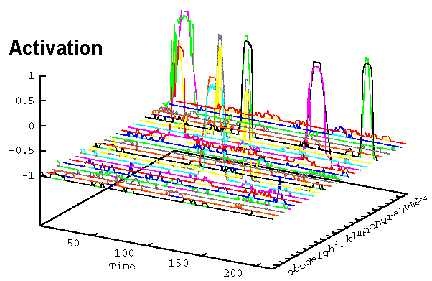| previous page |
contents
overview
system overview
preprocessing module
filtering module
recognition module
| previous page |
The Recognition Module uses a temporal representation of the input instead of a 2-dimensional static image. This allows us to preserve the sequential nature of the cursive data and justifies the use of a network architecture similar to the Time-Delay Neural Network (TDNN). The neural network-based recognizer is trained to classify the signal within its fixed-size input window as this window sequentially scans the input word representation, thus bypassing a potentially erroneous segmentation procedure. By training and recognizing characters in context (i.e., including a small portion of the word image that precedes and follows the given character) we expect to account for the co-articulation phenomena. Finally, the recognizer's outputs are collected and converted into an ASCII string that is matched with the reduced lexicon, provided by the Filtering Module, using a string-similarity function.
The Recognition Module employs a neural network-based recognition technique that bypasses the need for an explicit letter segmentation step by exploiting the temporal representation of the input. A further advantage of such a representation scheme is that stroke absences (from unintentional pen lifts) and accidental intersections (i.e., overlapping or touching characters) which significantly alter the topological (static) pattern of the word, have little or no influence on the `dynamic' pattern of it.
The task of the Recognition Module is accomplished in four steps:
The figures below illustrate the output produced by the Recognition Module when fed with an image of the word `worships'.
Preprocessed image...

What is shown in pink illustrates the scanning window concept: the receptive field (input window) of the neural network-based recognizer sequentially scans the input word representation.
Output activation traces generated by the neural network recognizer; eight activations peaks, corresponding to each of the letters present in the input image, are clearly visible...
